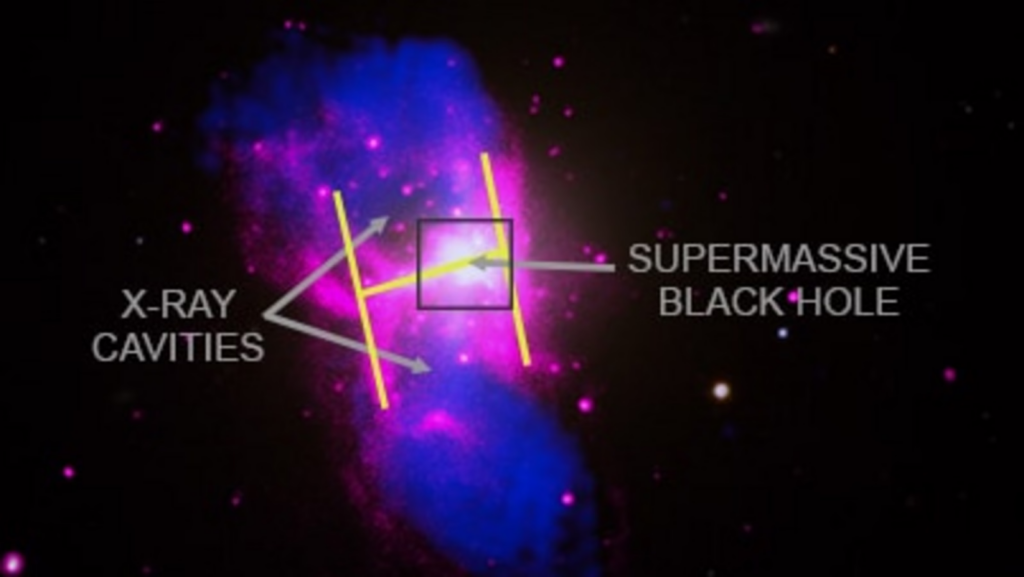A black hole has just now belched out the letter “H,” which has astronomers and people all around the world incredibly excited.
A bright pink “H” is etched into the scaldingly hot plasma that orbits a supermassive black hole that sits at the center of a very large galaxy. This hole is in the very center of the galaxy. Incredible as it may seem, the height of the structure is 40,000 light years, which is equivalent to more than half the diameter of our galaxy, the Milky Way.
The letter “H” was seen in an X-ray snapshot of the gas that surrounds the black hole in the irregular galaxy Messier 84 (M84), which is located around 60 million light-years distant from Earth in the constellation Virgo.

This shows the letter “H” produced in hot plasma by black hole jets.
The research also shows that jets have the ability to influence the flow of hot gas in the direction of the black hole, which has the effect of slowing down the pace at which gas falls into it.
Astronomers get the impression that some black holes are “picky eaters” because the jets that are emitted by black holes like this one appear to limit the quantity of gas that can be consumed from certain directions by the black hole.

According to a story on Space.com, the gravitational force of the supermassive black hole is responsible for drawing in the gas that can be seen in the shot. While some of this matter is going to fall to the surface of the black hole, which has a mass that is approximately one and a half billion times higher than that of the sun, the majority of it is going to remain in space.
In addition to X-ray data that was acquired by Chandra, the image was created using radio frequency data that was gathered by the Very Large Array (VLA), and it reveals jets that are fleeing the black hole.
The huge “H” shape that can be seen in the Chandra photograph of M84 is not the result of a black hole’s attempt to impose its will on the cosmos through artistic expression. Instead, it is an example of the psychological phenomena known as pareidolia, in which our minds construct organized representations or images out of data that appears to be random.
